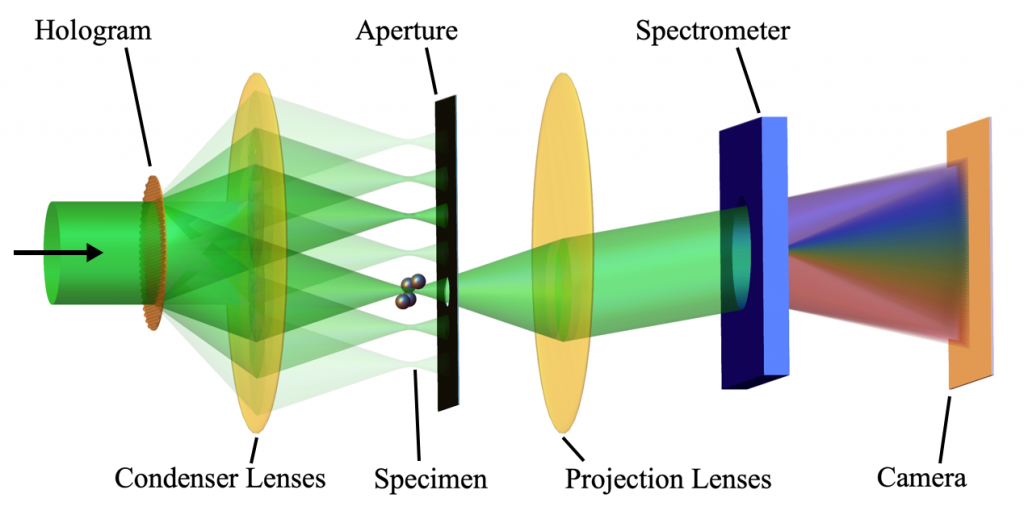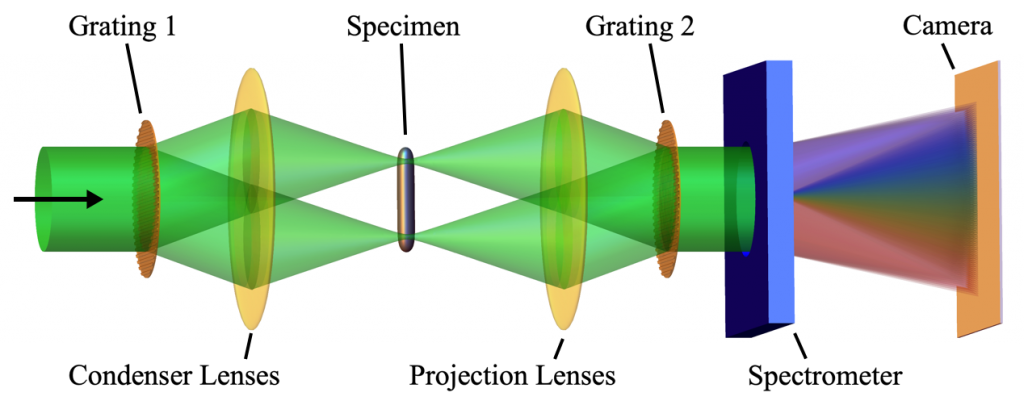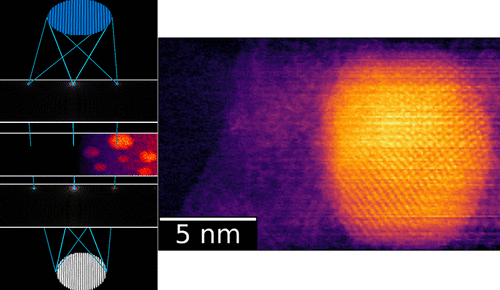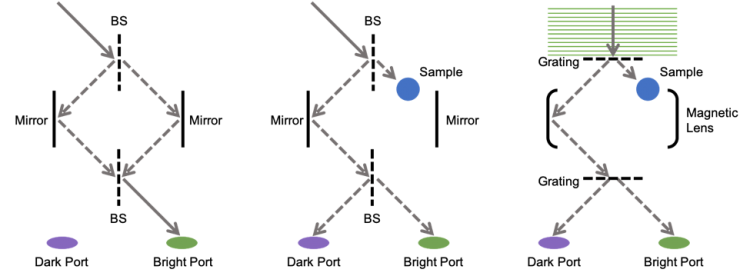Structured Electrons
- FIB Nanofabrication of Electron Holograms
We use gas-assisted focused ion beam milling to make nanoscale diffraction holograms for use in transmission electron microscopes. These holograms can be used to arbitrarily shape the spatial amplitude and phase of the the electron wavefront. One specific application is to create electron vortex beams, which are a major focus of study in the McMorran Lab. Similar to an optical vortex in a beam of light, the electron vortex is remarkable for its helical wavefronts and quantized orbital angular momentum. Unlike a light optical vortex, the electron vortex state possesses a magnetic moment and exhibits dichroic interactions with matter. In addition to providing an interesting new system with unusual physical properties to explore, this new state of the electron has several immediate applications in diverse areas of research.
- Nanoplasmonics with Structured Electrons
 One application of electron vortex beams we are exploring is studying the energy dependent exchange of orbital angular momentum between a focused structured electron wavefront and a nanoplasmonic systems. This is accomplished by interacting a single well defined structured electron probe with clusters of metallic nanoparticles, post-selecting that probe with an aperture, and analyzing the the energy spectrum of the structured electron after the interaction.
One application of electron vortex beams we are exploring is studying the energy dependent exchange of orbital angular momentum between a focused structured electron wavefront and a nanoplasmonic systems. This is accomplished by interacting a single well defined structured electron probe with clusters of metallic nanoparticles, post-selecting that probe with an aperture, and analyzing the the energy spectrum of the structured electron after the interaction.
Electron Interferometry
- STEM Interferometry
4D atomic resolution phase and amplitude contrast imaging technique with multiple scanning probes. At each point in a 2D STEM scan a 2D image of the interference fringes are recorded; from these interference fringes, the amplitude and phase of the probe passing through the specimen can be reconstructed.
- Interaction Free Measurements
Springing from the thought experiment done by Elitzur and Vaidman in 1993, we make interaction free measurements using electrons. The TEM is setup to mimic an optical Mach Zehnder interferometer. Instead of using beam splitters and mirrors, the system involves two aligned gratings and magnetic lenses, respectively. Using this novel 2-grating interferometric technique, we can measure a sample without ever interacting with it.
- Inelastic Interferometry
 Using a 2-grating interferometer, inelastically scattered electrons from the two separate paths can coherently interfere with each other. The recombined probes can show an enhancement or suppression of the inelastic signal dependent on the beam orientation and relative phase, as well as the orientation and symmetry of the specimen.
Using a 2-grating interferometer, inelastically scattered electrons from the two separate paths can coherently interfere with each other. The recombined probes can show an enhancement or suppression of the inelastic signal dependent on the beam orientation and relative phase, as well as the orientation and symmetry of the specimen.
Magnetic Materials
- Lorentz Imaging
- Lorentz STEM Interferometry
- SEMPA

SEMPA (Scanning Electron Microscope with Polarization Analysis) is a surface analysis instrument that can detect the spin orientation in 3 dimensions (2 shown) of secondary electrons from an SEM scan. These secondaries maintain the same spin orientation as the surface electrons enabling the creation of high resolution surface magnetization maps.


